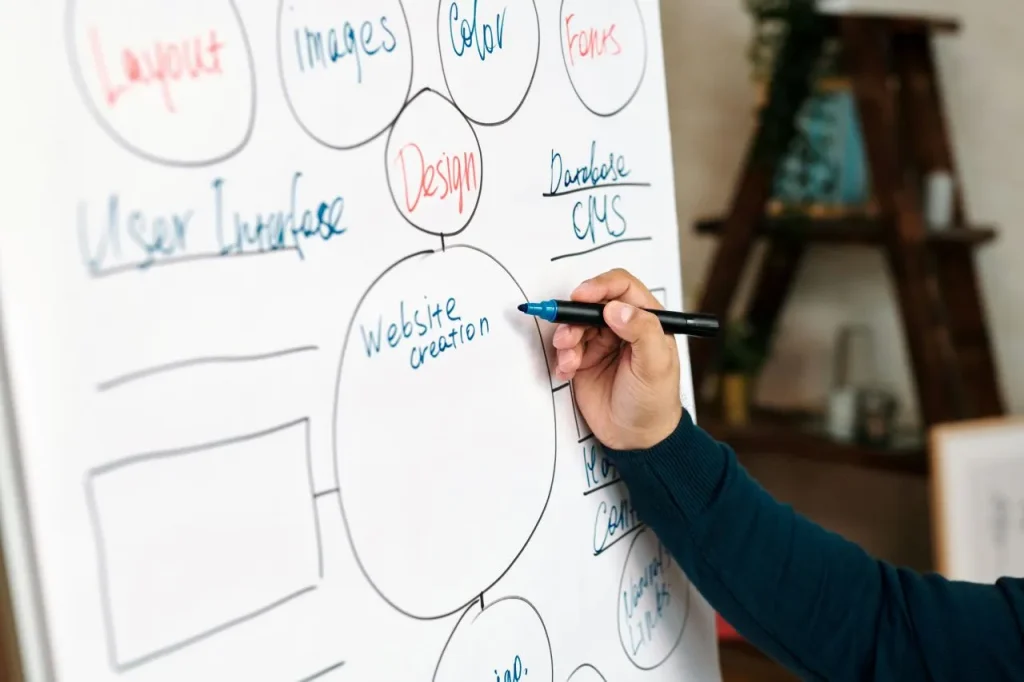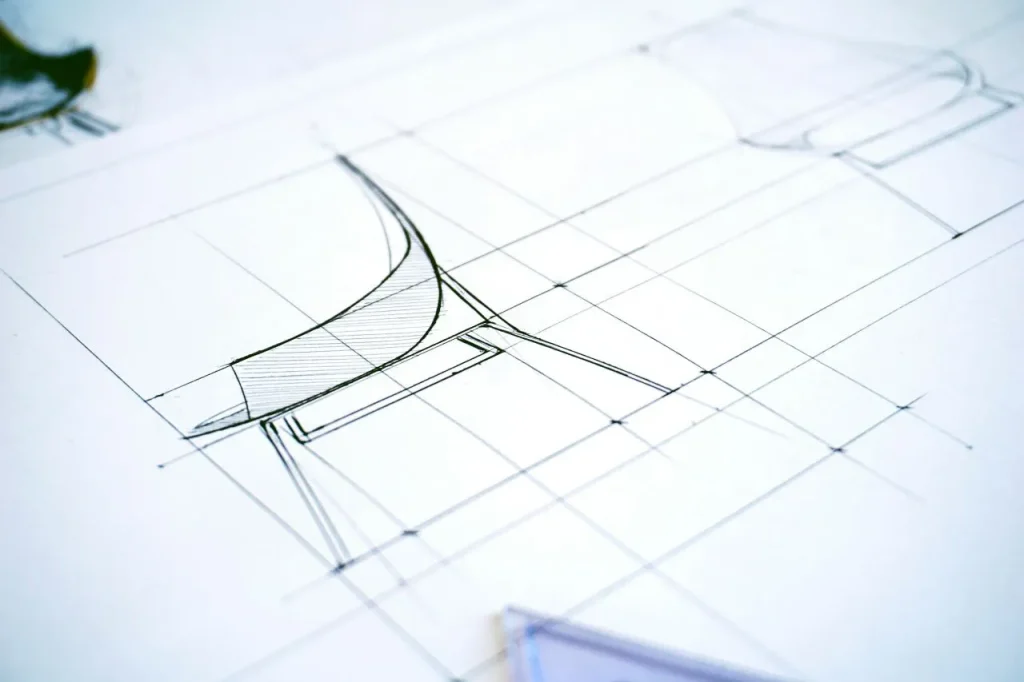Explore design thinking as an innovative approach to problem-solving, understanding its definition, five stages, application examples, and how to use tools and techniques to face challenges, as well as its future outlook.
Design thinking has emerged as a significant and innovative method for solving problems today. It transcends traditional ways of thinking by valuing user experience and iterative processes, thereby fostering innovation and the ability to solve complex issues. This article will delve into the core principles, practical methods, and application areas of design thinking, revealing how it has become a powerful tool for driving innovation in individuals, businesses, and society.
Definition of Design Thinking

Design thinking is an innovative approach that transcends conventional problem-solving methods by prioritizing human-centric solutions. It is a methodology that intertwines the art of understanding human needs with the science of crafting effective solutions. This process is inherently iterative, implying that design thinking is not a linear path but a cyclical journey of learning, creating, testing, and refining. At its core, it involves a deep empathy for the user, enabling designers and problem solvers to see beyond the obvious to uncover hidden needs and desires.
The collaborative nature of design thinking brings together diverse perspectives and disciplines, fostering a rich environment for creativity and innovation. It thrives on the collective intelligence of groups, leveraging the unique insights and experiences of each member to push boundaries and explore new possibilities. This multidisciplinary collaboration not only enriches the solution-finding process but also democratizes innovation, making it accessible to a broader range of contributors.
In contrast to traditional problem-solving models that may seek quick fixes or rely heavily on historical data, design thinking is more dynamic and flexible. It places a strong emphasis on experimentation, encouraging a culture of prototyping and testing. This mindset appreciates the value of failure as a learning tool, recognizing that each misstep provides critical information that can refine and improve future iterations. The willingness to fail and learn from failure is a hallmark of the design thinking approach, as it allows for rapid adjustment and resilience in the face of uncertainty.
Moreover, design thinking’s emphasis on quick learning and adjustment speaks to its agility. In today’s fast-paced world, where user needs and market conditions evolve rapidly, the ability to adapt and respond swiftly is invaluable. Design thinking equips organizations and individuals with the skills to navigate complexity, embrace change, and emerge with solutions that are not only effective but also deeply resonant with users.
In summary, design thinking reimagines the approach to problem-solving by weaving together empathy, collaboration, and experimentation. It challenges the status quo, pushing for solutions that are deeply human, inherently iterative, and collaboratively forged. Through its unique blend of empathy for the user, willingness to embrace failure, and commitment to continuous learning and adaptation, design thinking emerges as a powerful methodology for tackling complex challenges and creating innovative, sustainable solutions.
The Five Stages of Design Thinking

Design thinking unfolds through five interconnected stages that guide the journey from understanding the user to delivering innovative solutions. This iterative process is dynamic, with each stage building upon the insights gained from the others. The cyclical nature of design thinking allows for continuous refinement and adaptation, making it a powerful approach to innovation.
Empathy: The foundation of design thinking lies in empathy, a stage dedicated to immersing oneself in the users’ environment to gain a profound understanding of their needs, motivations, and challenges. This stage involves engaging with users directly through interviews, observations, and experiences to gather authentic insights. The goal is to see the world through the users’ eyes, setting aside one’s assumptions and biases. Empathy ensures that the solutions developed are grounded in real human needs and experiences, making them more relevant and impactful.
Define: With a deep understanding of the user, the define stage focuses on synthesizing the gathered information to identify the core problem that needs solving. This stage involves analyzing the data collected during the empathy stage, identifying patterns and insights, and articulating a clear problem statement. The problem definition sets the direction for ideation, guiding the creative process towards solutions that address the user’s true needs. It acts as a focal point, ensuring that the team remains aligned and focused on the user’s perspective throughout the design process.
Ideate: Ideation is the brainstorming phase where creativity is unleashed. With a clearly defined problem, the team generates a wide array of potential solutions, encouraging free-thinking and creativity. This stage values quantity over quality, with the understanding that among the multitude of ideas generated, some will spark innovative solutions. Techniques such as brainstorming sessions, sketching, mind mapping, and SCAMPER can facilitate this creative exploration. The ideate stage is crucial for breaking away from conventional solutions, encouraging out-of-the-box thinking that can lead to breakthrough innovations.

Prototype: Prototyping brings ideas to life. In this stage, conceptual solutions are transformed into tangible, testable prototypes. The focus is on rapid prototyping, creating simplified versions of solutions to explore their feasibility and effectiveness. Prototypes can range from paper sketches to interactive digital models, depending on the solution being developed. This stage allows designers to experiment with their ideas, identify potential flaws, and understand how real users interact with the prototype. Prototyping is an iterative process, where learning from each prototype informs the next, gradually refining the solution.

Test: Testing is the stage where prototypes are exposed to real users to gather feedback. This feedback is invaluable, providing insights into the usability, desirability, and effectiveness of the solution. Testing can reveal unforeseen issues or new opportunities for improvement, guiding further iterations of the prototype. This stage is not the end of the process but a critical part of the ongoing cycle of design thinking. Based on user feedback, designers may return to previous stages to redefine the problem, generate new ideas, or modify the prototype.
The five stages of design thinking—Empathy, Define, Ideate, Prototype, and Test—form a flexible and iterative approach that places the user at the heart of the design process. By moving fluidly through these stages, designers can develop solutions that are not only innovative but also deeply attuned to the needs and experiences of users. This human-centered approach ensures that design thinking can address complex problems across a wide range of contexts, leading to meaningful and impactful innovations.
Application Examples of Design Thinking
Design thinking’s versatility and human-centered approach have led to its adoption across various domains, where it acts as a catalyst for innovation and problem-solving. Here are expanded examples of how design thinking is applied in business, education, and social innovation, demonstrating its broad impact.

In Business: Enhancing Product and Service Innovation Companies across industries utilize design thinking to stay ahead in the competitive market by developing groundbreaking products and services. Apple, for example, has famously applied design thinking principles to create user-friendly, aesthetically pleasing products that meet users’ unarticulated needs. Similarly, Airbnb used design thinking to overhaul its website design based on empathetic understanding of both hosts and guests, significantly improving usability and subsequently increasing bookings. These examples underscore how businesses can use design thinking to understand their customers deeply, iterate their offerings based on feedback, and innovate in ways that strengthen their market position.

In Education: Cultivating Problem-Solving Skills Design thinking has been transformative in the educational sector by providing a framework for active learning and problem-solving. Schools and universities integrate design thinking into their curriculums to encourage students to tackle real-world problems creatively. For instance, the Hasso Plattner Institute of Design at Stanford University, also known as the d.school, offers courses where students apply design thinking to address complex issues, from healthcare to environmental sustainability. This hands-on approach prepares students for future challenges, equipping them with the skills to think critically, empathize, and collaborate effectively.
In Social Innovation: Addressing Societal Challenges Design thinking offers a powerful tool for social innovation, providing novel solutions to societal issues. Organizations like IDEO.org apply design thinking to enhance the lives of people in underserved communities around the world. Projects have included developing affordable and clean-burning cookstoves for families in developing countries and creating mobile apps that connect refugees to essential services. These initiatives demonstrate how design thinking can lead to sustainable, impactful solutions that address the root causes of social problems.

In Healthcare: Improving Patient Care and Services The healthcare industry benefits from design thinking by developing patient-centered services and products. Hospitals and healthcare providers use design thinking to improve patient experiences, from streamlining the check-in process to redesigning patient rooms for better comfort and safety. For example, the Mayo Clinic’s Center for Innovation employs design thinking to explore new ways to deliver healthcare, focusing on understanding patients’ perspectives to create services that cater to their specific needs and improve overall outcomes.
In Public Services: Enhancing Citizen Engagement Governments and public organizations apply design thinking to improve services and engage citizens more effectively. By empathizing with citizens, governments can redesign public services to be more accessible and user-friendly. The City of Helsinki, for instance, used design thinking to reimagine the city’s library services, resulting in the creation of the Oodi Central Library—a space that goes beyond traditional library services to meet the diverse needs of its community, fostering learning, creativity, and public engagement.
These examples illustrate the broad applicability and potential of design thinking to drive innovation and solve complex problems across different sectors. By focusing on human needs and fostering a culture of collaboration and iteration, design thinking empowers organizations, educators, and innovators to create meaningful and sustainable solutions.
Tools and Techniques of Design Thinking
The practice of design thinking incorporates a rich arsenal of tools and techniques designed to unlock creativity, foster empathy, and streamline the problem-solving process. These tools are essential for translating abstract ideas into tangible solutions, enabling teams to collaborate more effectively and ensuring that the end results are closely aligned with user needs. Here’s a closer look at some of the key tools and techniques employed in design thinking:

Mind Maps: Mind mapping is a versatile tool used during the ideation phase to explore the relationships between different concepts and ideas. By visually organizing thoughts around a central problem or theme, mind maps encourage divergent thinking and help teams generate a wide array of solutions. They are particularly useful for capturing the spontaneous flow of ideas during brainstorming sessions.
Storyboards: Storyboarding is a narrative tool that combines illustrations and text to tell the story of a user’s experience with a product or service over time. It helps teams envision and communicate the sequence of interactions from the user’s perspective, making it easier to identify potential pain points and areas for improvement. Storyboards are particularly effective for developing empathy with users and for planning user interface (UI) and user experience (UX) designs.
User Journey Maps: User journey mapping is a comprehensive technique used to document every step of the user’s interaction with a product or service. These maps detail the user’s motivations, challenges, and feelings at each point of engagement, providing a deep understanding of the user experience. Journey maps are instrumental in identifying opportunities for enhancing usability and satisfaction, guiding teams toward user-centered solutions.

Prototyping Tools: Prototyping is a critical stage in design thinking, and a variety of tools are available to bring ideas to life, from simple paper sketches to advanced digital prototyping software. Tools like Adobe XD, Sketch, and InVision allow designers to create interactive models of their solutions, enabling quick iterations based on user feedback. Physical prototyping materials, such as clay, cardboard, or 3D printers, are also widely used, especially for tangible products.
Empathy Maps: Empathy maps are visual tools that help teams gain deeper insight into their users’ world. By dividing the map into sections that capture what the user says, thinks, does, and feels, teams can develop a nuanced understanding of the user’s experience and motivations. Empathy maps are valuable for grounding the design process in human needs and for ensuring that solutions are empathetically designed.
Workshops and Co-Creation Sessions: Facilitated workshops and co-creation sessions bring together diverse stakeholders, including users, designers, and experts, to collaboratively generate ideas and solutions. These sessions often employ a combination of the above tools and techniques, leveraging the collective knowledge and creativity of the group. Workshops are effective for building consensus, fostering innovation, and ensuring that solutions are informed by a wide range of perspectives.
By skillfully applying these and other tools and techniques, practitioners of design thinking can navigate the complexities of problem-solving more effectively. These tools not only facilitate the visualization of problems and solutions but also enhance communication and collaboration among teams, ensuring that the solutions developed are both innovative and deeply aligned with user needs.
Design Thinking in Facing Challenges
Design thinking stands out as an exceptionally adaptable and effective approach when addressing complex, multifaceted challenges that resist straightforward solutions. Its inherent flexibility and user-centric focus make it especially powerful in contexts where traditional problem-solving methods fall short. Here’s an expanded look at how design thinking equips teams to navigate and overcome such challenges:

Cross-Disciplinary Collaboration: One of the core strengths of design thinking is its emphasis on bringing together individuals from a wide range of disciplines. This cross-disciplinary collaboration harnesses diverse perspectives and expertise, fostering a holistic understanding of the problem at hand. Architects, engineers, business analysts, psychologists, and other professionals work side by side, blending their insights to craft solutions that are both innovative and pragmatic. This collaborative ethos ensures that solutions are not only technically feasible but also economically viable and socially desirable.
Multi-perspective Problem Consideration: Design thinking encourages viewing problems through multiple lenses, recognizing that complex challenges often have social, technical, environmental, and economic dimensions. By considering these various aspects, teams can better understand the root causes of issues and identify leverage points for intervention. This multi-perspective approach helps avoid overly simplistic solutions that fail to address underlying complexities, leading instead to more comprehensive and sustainable outcomes.
Utilizing Diverse Knowledge and Skills: The process leverages the collective knowledge and skills of the team, drawing on a wide array of disciplines to inform the solution. This multidisciplinary approach enables the identification of unique connections and opportunities that might be overlooked in a more siloed problem-solving context. For instance, integrating insights from behavioral science can enhance the effectiveness of a technological solution by making it more user-friendly and aligned with human behavior.
Embracing Experimentation and Iteration: Design thinking’s iterative nature means that solutions are continually refined and tested against real-world conditions, allowing teams to learn from failures and adapt their strategies accordingly. This willingness to experiment, fail, and iterate is crucial for tackling complex problems, where initial solutions may not fully resolve the issue or might produce unintended consequences. Through rapid prototyping and testing, design thinking enables a more agile response to challenges, facilitating the development of solutions that are both effective and resilient.
Deep User Empathy: At the heart of design thinking is a deep empathy for the users affected by the problem. This empathy drives a more nuanced understanding of the challenge, ensuring that solutions are not only technically sound but also genuinely meet the needs and preferences of those they are designed to serve. By prioritizing user experiences and feedback throughout the design process, teams can avoid missteps and create solutions that people are eager to adopt and use.
In sum, design thinking’s approach to facing challenges is characterized by its collaborative spirit, its capacity to harness diverse expertise, and its commitment to iterative learning and user empathy. These qualities make it uniquely suited to addressing the kind of complex, interwoven problems that increasingly define our world, offering a pathway to innovative solutions that are both thoughtful and impactful.
The Future Outlook of Design Thinking
As we move further into the 21st century, the potential for design thinking to influence and transform various sectors of society is immense. Its adaptability and human-centric approach make it an ideal methodology to address the increasingly complex challenges of our time. With continuous advancements in technology and a growing emphasis on interdisciplinary collaboration, the applications of design thinking are set to broaden, reshaping how we approach problem-solving and innovation.

Integration with Emerging Technologies: The fusion of design thinking with cutting-edge technologies such as artificial intelligence (AI), blockchain, and the Internet of Things (IoT) promises to unlock new frontiers in solution development. AI, for instance, can enhance the design thinking process by providing deeper insights into user behavior and needs, enabling more personalized and effective solutions. Similarly, IoT can extend the reach of design thinking by connecting physical objects to digital interfaces, creating seamless user experiences. As these technologies evolve, they will empower designers to create more intelligent, responsive, and adaptive solutions.
Driving Sustainable Development: The principles of sustainability are becoming increasingly integral to design thinking. As global awareness of environmental issues grows, design thinking offers a framework for developing solutions that balance human needs with ecological sustainability. By incorporating sustainability into the core of the design process, it can guide the creation of products, services, and systems that minimize environmental impact while enhancing quality of life. This approach will be critical in addressing the urgent challenges of climate change, resource depletion, and biodiversity loss.
Enhancing Interdisciplinary Collaboration: The future of design thinking lies in its capacity to foster deep collaboration across disciplines. As problems become more interconnected, solutions will require the combined expertise of scientists, engineers, social scientists, business leaders, and designers. This collaborative approach, facilitated by design thinking, will lead to more holistic and robust solutions, capable of addressing the multifaceted challenges of the modern world.
Empowering Education and Learning: Design thinking is poised to transform educational systems by promoting active learning, critical thinking, and creativity. By integrating design thinking into curricula, educators can prepare students to tackle real-world problems with empathy, innovation, and resilience. This approach not only equips learners with valuable skills for the future workforce but also fosters a mindset oriented towards continuous improvement and social responsibility.
Shaping Public Policy and Governance: As governments and public institutions seek more effective ways to serve their constituents, design thinking offers a pathway to more user-centric public services. By applying design thinking to policy development and service design, public organizations can create more accessible, efficient, and transparent systems. This shift towards a more participatory and empathetic approach in governance can enhance public trust and engagement, leading to better outcomes for communities.
In conclusion, the future outlook for design thinking is one of growth, innovation, and increasing relevance across all sectors of society. By leveraging emerging technologies, promoting sustainable development, enhancing interdisciplinary collaboration, transforming education, and influencing public policy, design thinking will continue to be a pivotal force in shaping a better future. Its evolution will mirror the changing needs and challenges of our world, proving its enduring value as a tool for positive change and progress.
Conclusion

Design thinking stands out as a beacon of innovation in an increasingly complex and interconnected world. Its human-centered ethos, coupled with an iterative and collaborative process, positions it as a uniquely effective methodology for navigating the intricate challenges of modern society. Beyond merely a tool for problem solving, design thinking represents a paradigm shift in how we approach problems—transforming obstacles into opportunities for creativity, innovation, and growth.
The versatility of design thinking allows it to transcend boundaries, making it equally applicable and powerful whether in the realm of product development, the innovation of educational practices, or the broader sphere of social transformation. Its applications have already demonstrated significant impact, offering not just incremental improvements but often groundbreaking solutions that redefine the landscape of industries and communities.
Moreover, design thinking empowers individuals and organizations to not only respond to the present but also to anticipate the future. By fostering a mindset that values empathy, encourages experimentation, and embraces diversity of thought, it equips us to build more sustainable, inclusive, and resilient solutions. In a world where change is the only constant, this ability to adapt and innovate is invaluable.
As we look forward, the potential of design thinking to drive societal progress and innovation is boundless. Its principles, grounded in understanding human needs and fostering collaborative creativity, are timeless. Yet, as technology advances and our world becomes ever more complex, the need for design thinking becomes more acute. It offers a beacon of hope and a roadmap for those seeking to make a positive impact in an uncertain world.
In conclusion, design thinking is more than a method; it is a mindset and a movement towards a more innovative, empathetic, and human-centric future. Its strength and potential lie in its adaptability, its inclusivity, and its profound respect for the human experience. As we continue to face new challenges and opportunities, design thinking will undoubtedly play a pivotal role in shaping the future, demonstrating its enduring power to transform the world for the better.




